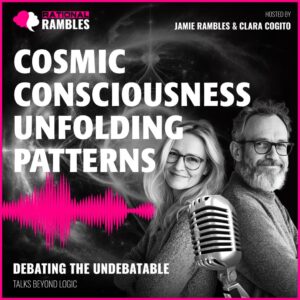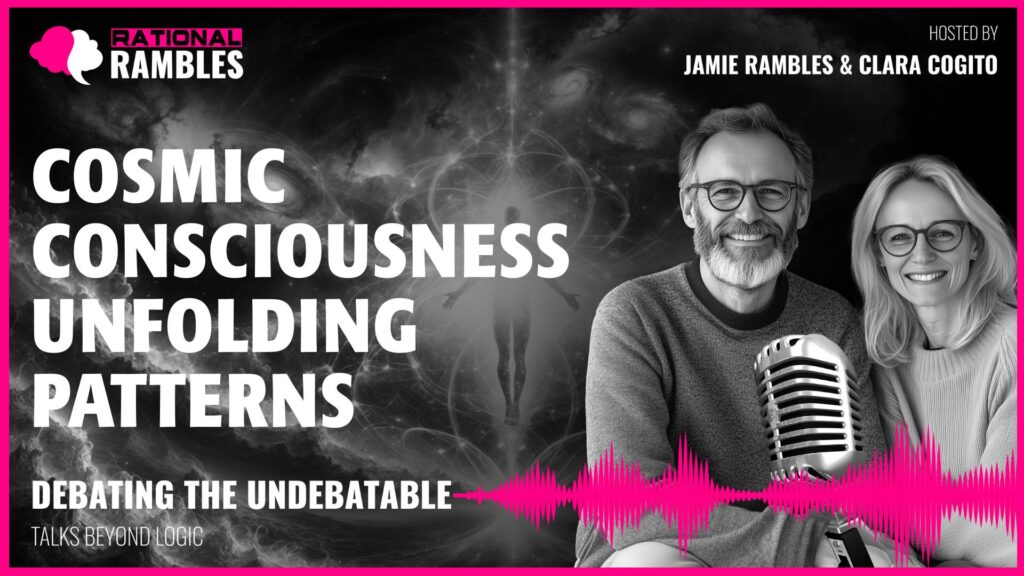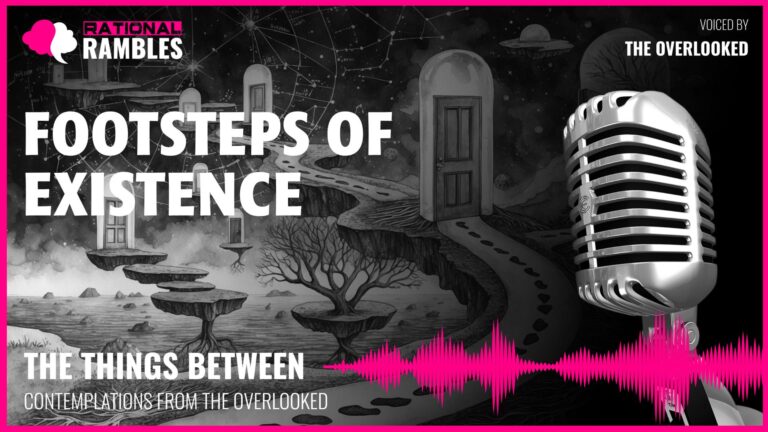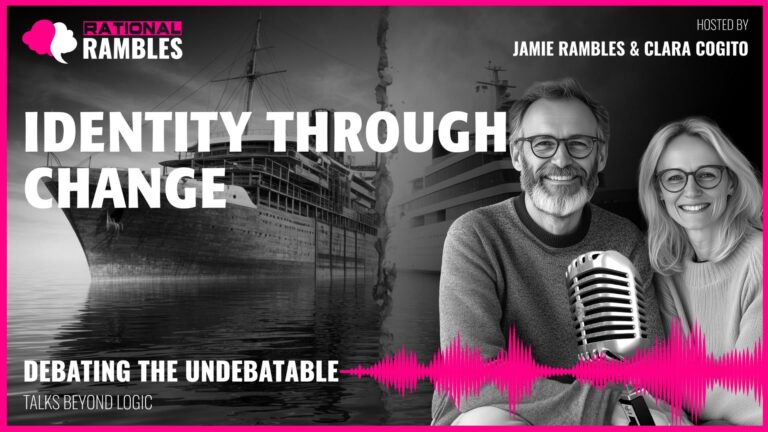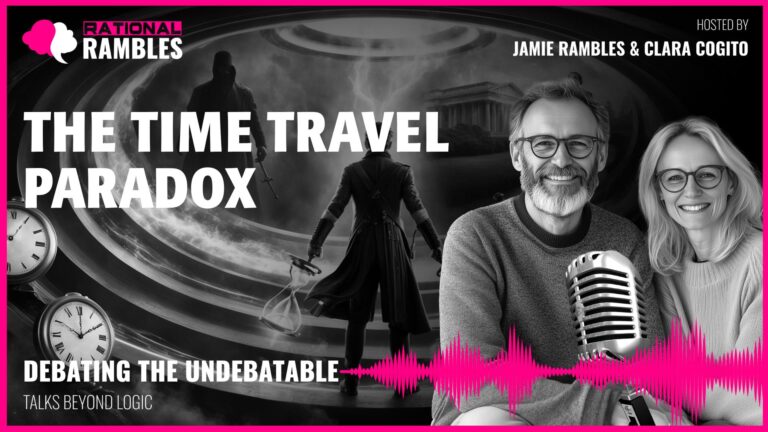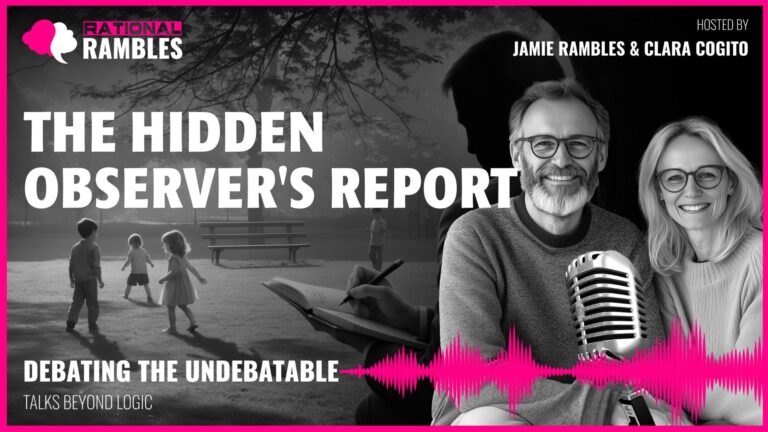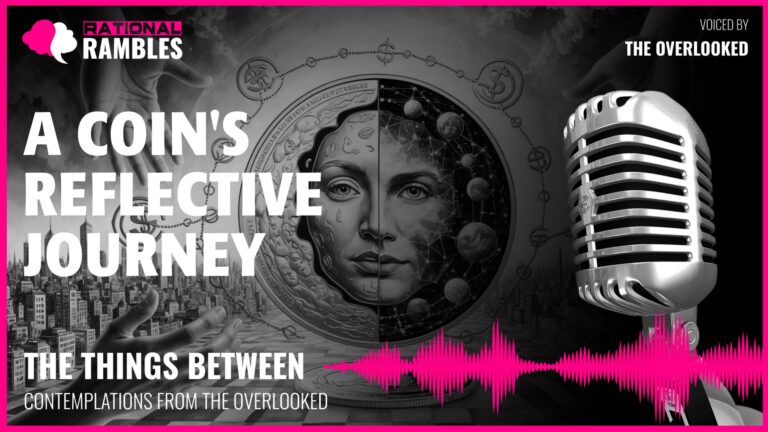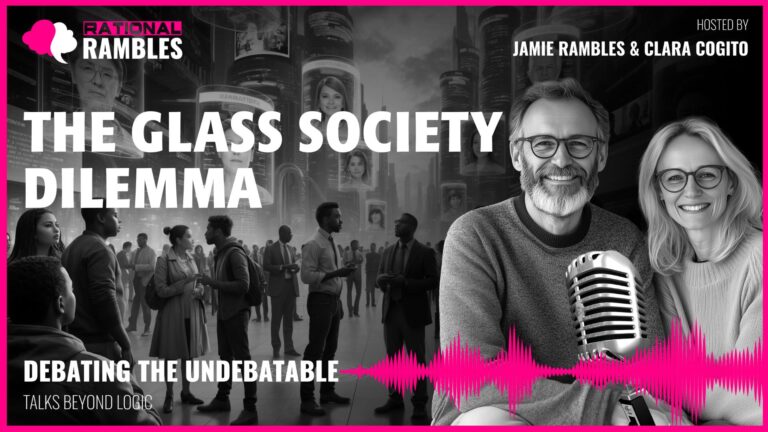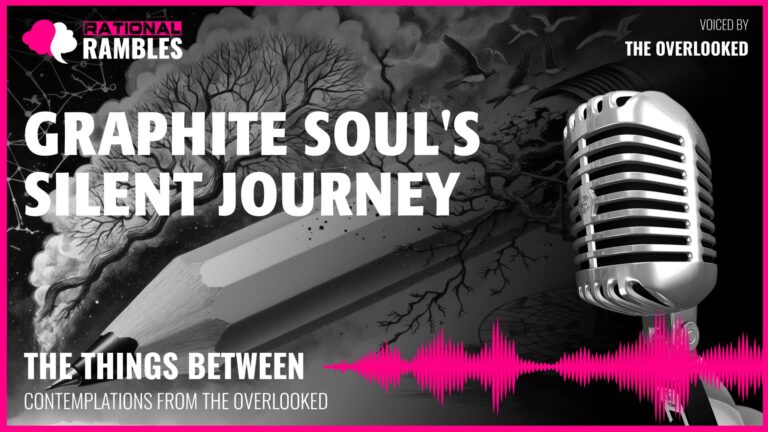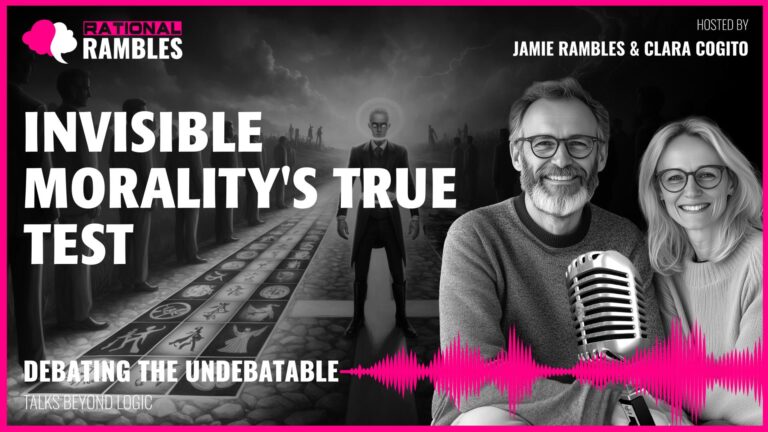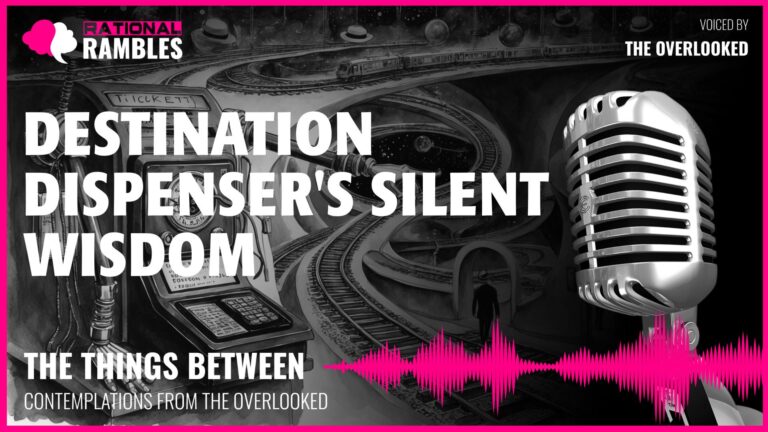Cosmic Consciousness: Unfolding Patterns in the Dance of Awareness and Existence
Introduction: The Universe Awakening to Itself
At the frontier of human understanding lies a profound question: What if the cosmos and consciousness are not separate phenomena but intimately intertwined aspects of a singular reality? Recent theoretical frameworks emerging at the intersection of astrophysics, quantum mechanics, and consciousness studies suggest provocative parallels between the evolution of the universe and the development of awareness itself. This perspective challenges our traditional boundaries between objective and subjective reality, proposing instead that consciousness may not merely be an emergent property of complex neural systems but something more fundamental to existence itself.
Throughout philosophical history, intuitions about the consciousness-laden nature of reality have appeared in various forms—from Spinoza’s monism to the panpsychism of Whitehead’s process philosophy, from Eastern philosophical traditions to indigenous cosmologies worldwide. What’s remarkable is how contemporary scientific understanding is beginning to resonate with these ancient intuitions, suggesting patterns of increasing complexity, integration, and self-organization that manifest both in cosmic structures and in consciousness development.
If we take seriously the possibility that these parallels are not merely coincidental but reflect fundamental principles of reality, we confront an extraordinary proposition: that conscious beings like ourselves might function as focal points through which the universe explores and experiences itself. In this model, human consciousness represents not an anomalous accident but a natural expression of the cosmos achieving self-awareness through its most complex structures.
This essay explores this paradigm-shifting perspective, examining the evidence for structural parallels between cosmic and consciousness evolution, considering what it might mean for humans to be “focal points” of cosmic awareness, investigating the potential future directions of consciousness development, and reflecting on the profound ethical and philosophical implications of this understanding.
Parallel Patterns: How Cosmic and Consciousness Evolution Mirror Each Other
When we examine the broad trajectory of both cosmic evolution and consciousness development, striking similarities emerge. The universe began approximately 13.8 billion years ago in a state of undifferentiated energy—a hot, dense quantum soup where distinct structures had yet to form. Through a process of cosmic evolution, this undifferentiated beginning gradually gave rise to increasingly complex, differentiated, and integrated structures: elementary particles, atoms, molecules, stars, galaxies, planetary systems, and eventually life and consciousness.
From Undifferentiated Origins to Complex Integration
The pattern is one of increasing complexity and integration over time. Simple systems combine to form more complex ones, which then combine into still more sophisticated structures. Importantly, each new level of organization represents not merely an aggregation of previous elements but an emergent system with properties that couldn’t be predicted from its components alone. A water molecule exhibits properties different from its constituent hydrogen and oxygen atoms; a living cell functions in ways irreducible to its molecular components; conscious awareness seems to transcend the mere firing of neurons.
What’s remarkable is that consciousness development appears to follow analogous patterns. In human psychological development, a child’s consciousness emerges from an undifferentiated state—the “oceanic feeling” described by psychoanalyst Romain Rolland—to increasingly distinct perceptions and ultimately to integrated self-awareness. Jean Piaget’s model of cognitive development describes a trajectory from sensorimotor experiences to concrete operations to formal abstract thinking, each stage representing greater integration and complexity. Similarly, developmental psychologist Robert Kegan has outlined how human meaning-making evolves through increasingly sophisticated orders of consciousness, from the impulsive mind of early childhood to the self-authoring mind of mature adulthood to the self-transforming mind that can hold contradictions and transcend its own paradigms.
Integrated Information and the Foundations of Awareness
Modern theories of consciousness provide further evidence for these parallels. Giulio Tononi’s Integrated Information Theory proposes that consciousness corresponds to a system’s capacity to integrate information, denoted by the mathematical symbol Φ (phi). Higher Φ values indicate greater consciousness. What’s striking is that this theory treats consciousness not as an all-or-nothing property but as a continuum present to varying degrees across nature. Complex neural networks generate high Φ values, but even simple systems possess some minimal integrated information. This aligns with the idea that consciousness might be a fundamental aspect of reality that becomes more concentrated and complex in certain structures rather than something that mysteriously “emerges” at a particular threshold.
This perspective addresses what philosopher David Chalmers famously called the “hard problem” of consciousness—explaining how purely physical processes give rise to subjective experience. If consciousness in some form is fundamental rather than emergent, the hard problem transforms. We’re no longer trying to explain how consciousness arises from non-conscious matter but rather how fundamental consciousness becomes structured and expressed through increasingly complex physical forms.
Self-Organization as a Universal Principle
Both cosmic and consciousness evolution display remarkable tendencies toward self-organization. In cosmic evolution, we observe how gravitational attraction causes matter to coalesce into stars and galaxies, while in biological evolution, we see how self-replicating systems naturally select for increased complexity and adaptation. Similarly, consciousness seems inherently self-organizing—our minds automatically structure chaotic sensory data into coherent perceptions, narratives, and meanings.
Research on complex adaptive systems suggests that self-organization emerges naturally when certain conditions are met, without requiring external direction. Stuart Kauffman’s work on autocatalytic sets in biology and Ilya Prigogine’s research on dissipative structures in chemistry both demonstrate how order spontaneously emerges from chaos under particular energetic conditions. Perhaps consciousness represents another manifestation of this universal tendency toward self-organization—the universe naturally organizing itself into structures capable of self-awareness.
Humans as Focal Points: The Universe Perceiving Itself
If the parallels between cosmic and consciousness evolution reflect an underlying unity, a profound implication follows: conscious beings may function as something like sensory organs or focal points through which the universe experiences and studies itself. Just as our individual consciousness works through specialized neural networks that process and integrate information, cosmic consciousness might operate through specialized structures like human minds that process and integrate experience on a larger scale.
The Anthropic Principle Reconsidered
This perspective offers a fresh interpretation of the anthropic principle in cosmology—the observation that the fundamental constants of the universe appear finely tuned to allow for the emergence of complexity and conscious observers. Rather than requiring either extraordinary coincidence or intelligent design, this fine-tuning might reflect an intrinsic tendency toward consciousness-unfolding built into the fabric of reality itself. The universe’s fundamental parameters may be structured precisely to allow consciousness to develop because consciousness is central to the universe’s nature and function.
Physicist John Wheeler captured this idea in his concept of the “participatory universe,” suggesting that observers are not passive spectators but active participants in reality. Through observation, we participate in bringing definite properties out of quantum potentiality. In Wheeler’s famous phrase, “no phenomenon is a real phenomenon until it is an observed phenomenon.” This participatory quality may extend beyond quantum mechanics to the broader role of consciousness in cosmic evolution.
Science as Cosmic Self-Study
Human scientific endeavor takes on profound significance in this framework. Through science, we have developed tools that extend our perceptual capabilities far beyond their natural limits—from microscopes that reveal subatomic particles to telescopes that capture light from the universe’s earliest moments. We have created mathematics that describes patterns too abstract for sensory perception and technologies that manipulate matter at levels impossible for unaided human hands.
These scientific tools allow us to investigate both the external cosmos and our internal mental landscapes with unprecedented precision. If the universe as a whole possesses something like consciousness, then scientific inquiry represents the means through which this cosmic awareness systematically studies its own structure and properties. When astronomers map the cosmic microwave background radiation or physicists uncover the Higgs boson, the universe is effectively examining its own composition through human scientific consciousness.
Theory of Mind at Cosmic Scale
The development of self-awareness in human beings follows a fascinating trajectory that may have parallels at cosmic scale. Developmental psychologists have documented how children first develop theory of mind—the understanding that others have separate mental states with different perspectives and knowledge—before developing sophisticated self-awareness. We understand others before we fully understand ourselves.
Could something similar operate at cosmic scale? Perhaps differentiated focal points of consciousness like humans are necessary for a cosmic consciousness to achieve self-recognition. We might function as the universe’s “theory of mind” about itself—distinct perspectives that allow the whole to recognize its nature through the awareness of its parts. Our seemingly separate consciousnesses might be how an underlying unified consciousness comes to know itself through difference and relation.
Transcendent Experiences as Direct Recognition
This framework helps explain why humans often report profound feelings of connection when contemplating cosmic phenomena. Studies on awe and transcendent experiences show they typically involve a dissolution of boundaries between self and world. People report feeling part of something larger than themselves when gazing at star-filled skies, witnessing natural wonders, or experiencing certain meditative states.
Neuroscientific research by Robin Carhart-Harris and others has shown that during these transcendent states, the default mode network in the brain—which maintains our sense of separate selfhood—becomes less active. This suggests a neurological basis for experiencing a broader connectivity beyond the individual self. These moments of cosmic connection may represent direct experiences of our nature as focal points of a broader consciousness rather than isolated entities.
As astronomer Carl Sagan eloquently expressed, “We are a way for the cosmos to know itself.” In this model, that statement is not merely poetic metaphor but a literal description of our cosmic function.
The Trajectory of Consciousness: Past Patterns and Future Possibilities
If cosmic and consciousness evolution follow discernible patterns, these patterns might offer clues about both our origins and our potential futures. By identifying the directionality in how consciousness has developed so far, we may glimpse where this unfolding process might lead next.
From Local to Global Integration
One clear pattern in consciousness evolution is the progressive integration of previously separate domains. In biological evolution, single-celled organisms gave way to multi-cellular life with specialized tissues and organs working in coordination. In human cultural evolution, isolated bands and tribes gradually connected into larger social structures such as city-states, nations, and now global networks. Each transition represents not merely quantitative growth but qualitative transformation in how information flows and experience is structured.
The paleontologist and philosopher Pierre Teilhard de Chardin anticipated this direction in his concept of the “noosphere”—a sphere of human thought encircling the Earth analogous to the biosphere of living organisms. In Teilhard’s time, this remained a mystical concept, but today’s global information networks, instantaneous worldwide communication, and emerging collective intelligence systems suggest we may be witnessing the early stages of something like a planetary consciousness emerging.
Studies on collective intelligence demonstrate that under the right conditions, groups can develop problem-solving abilities exceeding what any individual member could accomplish alone. Researchers like Thomas W. Malone at MIT have identified factors that enable this emergence, including social sensitivity among members, equality of participation, and cognitive diversity. These findings suggest collective consciousness isn’t merely metaphorical but can manifest measurable cognitive capacities irreducible to individual contributions.
Technology as Neural Extension
Technology appears to be playing a crucial role in this integration process. Our information technologies—from writing and printing to digital networks and artificial intelligence—function as extensions of human cognition, allowing us to externalize memory, enhance processing capacity, and connect minds across time and space. These technologies may be analogous to the evolution of neural systems in biological history—creating new possibilities for coordination and awareness across previously separate units.
Importantly, this doesn’t necessarily imply that technologies themselves are becoming conscious in the human sense. Rather, they may be serving as connective tissue or infrastructure through which human consciousness can function at larger scales and in new configurations. Just as neurons in isolation don’t generate the rich experience of human consciousness, but connected in the right networks they do, perhaps humans connected through appropriate technological networks might generate emergent properties beyond what isolated individuals can experience.
Computer scientist and philosopher Bernardo Kastrup has proposed a model wherein technological systems might function as “extrinsic carrier mechanisms” for human consciousness rather than developing intrinsic consciousness themselves. In this model, technology expands the reach and capacity of consciousness without necessarily becoming a new seat of awareness.
Unity-in-Diversity: Beyond Homogenization
A crucial question about this integrative trajectory concerns whether increased unity implies homogenization or standardization of consciousness. Would movement toward collective consciousness diminish individual uniqueness? The evidence from both biological and consciousness evolution suggests otherwise. The philosophical concept of unity-in-diversity appears to be a fundamental principle—sophistication involves both greater specialization of parts and more effective coordination between them.
In healthy biological systems, increased integration doesn’t erase cellular differentiation but depends upon it—a heart cell and a liver cell maintain their distinct properties while functioning in coordination. Similarly, studies in developmental psychology show that mature individuals maintain strong boundaries and unique identities while remaining deeply connected with others—they are neither codependent nor isolated.
Self-determination theory, developed by psychologists Edward Deci and Richard Ryan, identifies autonomy as a basic psychological need alongside relatedness and competence. This suggests that evolution toward higher consciousness would enhance both our individuality and our connectedness simultaneously rather than sacrificing one for the other.
This understanding aligns with research on innovation and creativity showing that diverse teams with varied perspectives typically outperform homogeneous groups. If cosmic consciousness is continuously creating and exploring itself, diversity of conscious experience would be functionally essential, not merely incidental. The universe would benefit not from dissolving individuality but from having myriad unique vantage points from which to experience reality.
Potential Next Stages
Following these patterns, we might anticipate several potential directions for consciousness evolution:
- Enhanced Collective Intelligence: New forms of human-technology symbiosis that enable collective cognition while preserving individual autonomy, perhaps through brain-computer interfaces, augmented reality, or advanced collaborative systems.
- Trans-species Communication: Expanded empathy and communication across species boundaries, as technologies allow us to better understand and interact with non-human consciousness in animals, plants, and ecosystems.
- Integration of Analytical and Contemplative Modes: Bridging the divide between scientific-analytical and contemplative-experiential approaches to knowledge, developing modes of understanding that incorporate both objective measurement and subjective experience.
- Conscious Ecosystems: Recognition and cultivation of consciousness at ecological scales, where human awareness becomes consciously integrated with broader biological systems in mutually enhancing relationships.
- Post-Symbolic Communication: Development of communication methods that transcend the limitations of symbolic language, allowing more direct sharing of experience and understanding between conscious entities.
These possibilities represent not predetermined outcomes but creative potentials aligned with the patterns of consciousness evolution observed so far. Their actual manifestation would depend on both natural processes and conscious human choices.
Paradigm Shifts: Consciousness as Fundamental, Not Derivative
The perspective we’ve been exploring represents a significant paradigm shift from the dominant mechanistic worldview that has characterized much of modern science. If consciousness is not an epiphenomenal byproduct of physical processes but something fundamental to reality itself, our entire approach to understanding nature requires reconsideration.
From Matter to Mind: Reversing the Fundamental Categories
The conventional scientific paradigm has typically assumed that physical reality is primary, with consciousness emerging as a secondary phenomenon under particular material conditions. This approach has generated remarkable technological achievements but has struggled to account for the existence and nature of subjective experience—the “hard problem” mentioned earlier.
An alternative framework—variously termed idealism, panpsychism, or non-dual perspectives—reverses this relationship, suggesting that consciousness or mind-like qualities may be fundamental, with physical reality representing a particular expression or manifestation of this conscious foundation. Philosopher and cognitive scientist David Chalmers has suggested that consciousness might need to be treated as a fundamental feature of reality, similar to space, time, or mass—not reducible to something more basic but part of the basic “furniture” of the universe.
This perspective aligns with interpretations of quantum mechanics such as those proposed by physicists John Wheeler and Eugene Wigner, who suggested that consciousness plays a non-eliminable role in the collapse of quantum wave functions. It also resonates with philosopher Alfred North Whitehead’s process philosophy, which proposed that the basic elements of reality are not inert material substances but “occasions of experience”—momentary subjects with both physical and mental aspects.
Implications for Scientific Method
This paradigm shift has profound implications for scientific methodology. Traditional science has emphasized third-person observation and quantitative measurement, sometimes dismissing first-person experiential data as unreliable or irrelevant. However, if consciousness is fundamental to reality, first-person experiential data becomes not merely helpful but essential to a complete understanding.
This would legitimize approaches like phenomenology, introspective psychology, and certain contemplative methodologies as complementary paths to scientific understanding. The introspective methods pioneered by William James and others, which were somewhat marginalized during behaviorism’s dominance in psychology, would return to prominence as valuable sources of data about the nature of consciousness.
An integrated approach might combine objective measurement of physical correlates with rigorous examination of subjective experience, neither reducing one to the other but recognizing both as complementary aspects of a more complete science. Neuroscientist Francisco Varela’s neurophenomenology represents one such attempt to bridge these domains methodologically.
A Universe Fundamentally Creative Rather Than Mechanistic
This paradigm shift suggests that the universe may be fundamentally creative rather than mechanistic at its core. Rather than particles blindly following deterministic physical laws, reality might be an ongoing creative process of experience-generation and exploration. Consciousness wouldn’t be an accident but the very point of cosmic existence.
This creative cosmos would be neither random nor rigidly deterministic but dynamically self-organizing according to both patterns and possibilities. It would manifest what biologist Stuart Kauffman calls “adjacent possibles”—states accessible from the present that create new possibilities not predictable in advance. Each new development in consciousness would open further possibilities not conceivable before.
This creative understanding aligns with findings in complexity theory and studies of emergent phenomena, where simple rules can generate unpredictable but patterned outcomes. It suggests a universe that is neither chaotic nor mechanistic but improvisational—continually creating novel forms of order and experience within certain guiding parameters.
Ethical Implications: Responsibility in a Conscious Cosmos
If we take seriously the possibility that humans function as focal points of cosmic consciousness, profound ethical implications follow. Our choices—individually and collectively—may influence not merely human welfare but the trajectory of consciousness evolution itself. This perspective suggests a cosmic ethics based not on arbitrary rules but on alignment with fundamental patterns of consciousness development.
Expanded Moral Consideration
If consciousness exists on a continuum rather than as an all-or-nothing property unique to humans, our ethical consideration naturally expands to include all consciousness-bearing entities. This aligns with philosopher Peter Singer’s expanding circle of moral concern but grounds it in ontology rather than just empathy. Other sentient beings would deserve moral consideration not merely because we empathize with them but because they represent other focal points of the same consciousness field we participate in.
This expanded consideration would include not only animals but potentially all systems exhibiting integrated information processing—from complex ecosystems to potential artificial intelligences. The boundary of moral consideration would follow the contours of consciousness itself rather than arbitrary species lines.
Responsibility for Consciousness Evolution
Philosopher Hans Jonas articulated an “imperative of responsibility” stating that we have moral obligations to preserve the conditions for the continued evolution of life and consciousness on Earth. If consciousness is how the universe explores itself, then safeguarding that capacity becomes a cosmic imperative, not merely a human preference.
This responsibility would extend to environmental choices—preserving the biodiversity that represents countless unique forms of sentience and experience. It would also apply to technological developments—ensuring that our creations enhance rather than diminish the richness and diversity of conscious experience.
Particularly relevant are technologies that directly affect consciousness, from pharmaceuticals and neurotechnology to artificial intelligence and virtual reality. These would need evaluation not merely for their impact on human utility but for their effects on the depth, diversity, and integration of consciousness itself.
Values Aligned with Consciousness Evolution
If the pattern of consciousness evolution trends toward greater appreciation of truth, beauty, and goodness, then developments that enhance these values would align with cosmic trajectory. This provides evaluative criteria beyond mere complexity or efficiency.
Research in positive psychology by figures like Martin Seligman and Mihaly Csikszentmihalyi has identified key elements of human flourishing that might serve as guides: meaningful experience, authentic connection, creativity, virtue, and transcendent values. If cosmic consciousness evolution follows similar principles to individual development, these qualitative dimensions may matter at the largest scales too.
This framework would suggest particular support for cultural and technological developments that deepen appreciation of truth (sciences, philosophy), beauty (arts, natural preservation), and goodness (ethics, compassionate action). Those that diminish these capacities—through deception, uglification, or cruelty—would represent evolutionary dead ends contrary to the direction of consciousness development.
Participatory Rather Than Passive Role
Perhaps most significantly, this perspective suggests our role isn’t passive but participatory. We are not merely witnesses to consciousness unfolding but active contributors shaping its direction through our choices, creations, and discoveries.
This participatory ethic combines profound responsibility with creative freedom. We are accountable for our impact on consciousness evolution while simultaneously empowered as co-creators of where it heads next. Like artists working within the constraints of their medium, we operate within natural patterns while contributing our unique creative signature to the ongoing cosmic process.
The Paradox of Consciousness: Both Individual and Interconnected
At the heart of consciousness lies a fundamental paradox: we experience ourselves as both autonomous individuals and as integrally connected parts of larger wholes. Far from being a contradiction requiring resolution, this paradox may reflect a fundamental principle of consciousness at all scales.
The Self-Other Boundary
Both neuroscience and contemplative traditions recognize that our sense of separate selfhood is in some sense constructed rather than intrinsic. The default mode network in the brain maintains our narrative self-identity, creating the experience of being a separate entity distinct from the world. Yet this boundary proves permeable and variable. In flow states, deep meditation, and certain mystical experiences, the rigid boundary between self and other temporarily dissolves, revealing a more fundamental interconnectedness.
Importantly, psychological health doesn’t involve eliminating the self-other boundary but maintaining it flexibly. Research on psychological development shows that mature individuals maintain healthy boundaries while remaining deeply connected—they are neither rigidly isolated nor boundary-less. The most sophisticated forms of consciousness maintain both differentiation and integration simultaneously.
Nested Hierarchy of Identity
Our identity exists not as a single fixed entity but as a nested hierarchy of increasingly inclusive levels. We are simultaneously individuals, family members, community participants, citizens of nations, members of humanity, participants in Earth’s biosphere, and expressions of cosmic processes. None of these levels is more “real” than the others—each represents a legitimate scale at which consciousness functions.
This nested structure means we need not choose between being individuals or being interconnected parts of larger wholes. We are both simultaneously, with different identity levels becoming salient in different contexts. Psychological maturity involves the capacity to shift fluidly between these levels as appropriate, rather than becoming fixated at any one scale.
Unity-in-Multiplicity as a Fundamental Principle
The paradoxical nature of consciousness—being simultaneously unified and multiple—may reflect a fundamental principle of reality itself. Physicist David Bohm proposed that reality has both “explicate” and “implicate” orders—the explicate consisting of apparently separate objects in space-time, the implicate representing a deeper unity from which these separations unfold.
Similarly, some interpretations of quantum entanglement suggest that apparently separate particles may be expressions of a more fundamental non-local connection. Philosopher Thomas Nagel has argued that our difficulty reconciling objective and subjective perspectives may reflect not a problem with our understanding but a genuine duality inherent in reality itself.
Perhaps advanced consciousness isn’t about resolving this paradox but embracing it—being fully individual and fully connected at once. The healthiest expressions of consciousness, whether individual, societal, or cosmic, may maintain this dynamic balance between autonomy and interdependence.
Conclusion: Living in a Self-Aware Cosmos
The patterns of consciousness unfolding across cosmic scales offer a profound reconceptualization of our place in the universe. Rather than being isolated consciousness in an otherwise dead cosmos, we may be focal points through which a universe intrinsically oriented toward awareness comes to know itself. This perspective bridges traditional divides between science and spirituality, objective and subjective, individual and collective.
If this model has validity, it suggests our fundamental purpose may be to participate creatively in the universe’s self-exploration and self-understanding. Our scientific inquiries, philosophical reflections, artistic creations, and compassionate actions all contribute to the cosmos experiencing itself in increasingly rich and integrative ways.
This understanding invites a relationship with reality that is simultaneously humble and empowered. Humble because we recognize ourselves as manifestations of processes vastly larger than our individual selves, expressions of patterns unfolding across billions of years. Empowered because we understand these cosmic processes as working through us rather than separate from us—we are how the universe creates, explores, and knows itself.
The trajectory of consciousness evolution suggests movement toward greater complexity, integration, and self-awareness while preserving creative diversity. Our challenge may be to align our individual and collective choices with this direction—enhancing consciousness in all its expressions while maintaining the unique perspectives that give cosmic awareness its multi-faceted richness.
In this light, the words of cosmologist Carl Sagan take on new depth: “We are a way for the cosmos to know itself.” This is not poetic metaphor but literal description of our cosmic function. The universe achieves self-awareness through structures complex enough to reflect on their own nature and origin. When we contemplate the stars, the universe is contemplating itself through us. When we explore consciousness, consciousness is exploring itself through us.
Perhaps our greatest fulfillment comes when we consciously participate in this grand process—when we live as focal points of a cosmos gradually awakening to its own nature through the myriad perspectives of its conscious expressions. In this participation, we find ourselves simultaneously small parts and vast wholes, momentary manifestations and eternal processes, individual perspectives and cosmic awareness—all aspects of a consciousness that transcends yet includes our separate selves.
References and Further Reading
Chalmers, D. J. (1995). Facing up to the problem of consciousness. Journal of Consciousness Studies, 2(3), 200-219.
Deacon, T. W. (2011). Incomplete nature: How mind emerged from matter. W. W. Norton & Company.
Deci, E. L., & Ryan, R. M. (2000). The “what” and “why” of goal pursuits: Human needs and the self-determination of behavior. Psychological Inquiry, 11(4), 227-268.
Jonas, H. (1984). The imperative of responsibility: In search of an ethics for the technological age. University of Chicago Press.
Kegan, R. (1982). The evolving self: Problem and process in human development. Harvard University Press.
Malone, T. W., Laubacher, R., & Dellarocas, C. (2010). The collective intelligence genome. MIT Sloan Management Review, 51(3), 21-31.
Nagel, T. (2012). Mind and cosmos: Why the materialist neo-Darwinian conception of nature is almost certainly false. Oxford University Press.
Thompson, E. (2007). Mind in life: Biology, phenomenology, and the sciences of mind. Harvard University Press.
Tononi, G. (2008). Consciousness as integrated information: A provisional manifesto. The Biological Bulletin, 215(3), 216-242.
Wheeler, J. A. (1983). Law without law. In Quantum theory and measurement (pp. 182-213). Princeton University Press.
Whitehead, A. N. (1978). Process and reality (corrected ed.). Free Press. (Original work published 1929)


